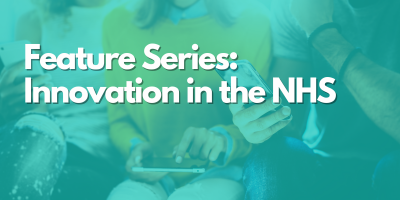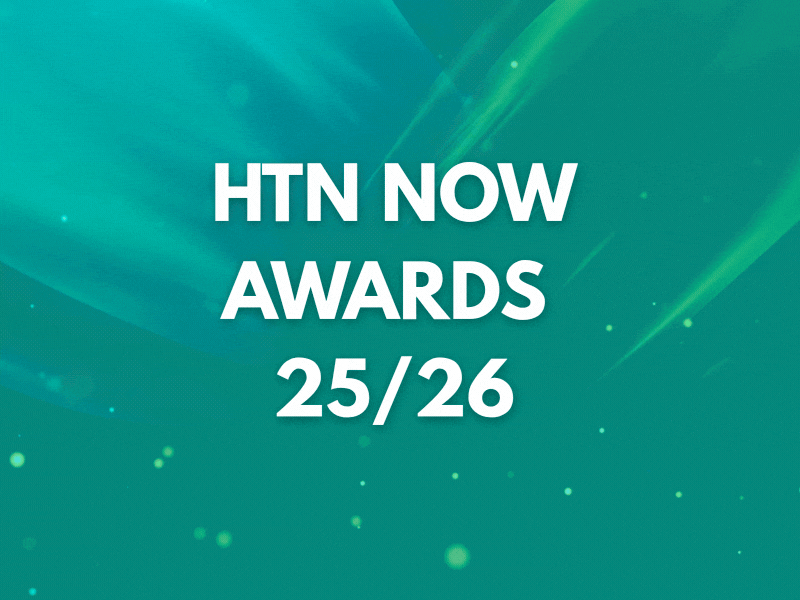Here, we present finalsits for the HTN Now Awards 2024 in the category of Best Virtual Care Project.
OX.DH
Overview: OX.DH’s virtual consultation solution, OX.Waiting Room (OX.wr), enables video/online consultations for group and one-to-one sessions. Device and browser agnostic, and available as a Microsoft Teams plug-in, no separate app is required. Clinicians and patients save time and money whilst enjoying a familiar, intuitive experience.
Why? The COVID-19 pandemic demonstrated the need for remote consultations, when in-person appointments were simply not feasible. Post-pandemic, both clinicians and patients continue to realise the benefit of virtual consultations and often feel more comfortable with a more personal, visual interaction.
What happened? OX.wr is already available on the NHS national tenant and NHS App store. Barnsley Hospital NHS Foundation Trust had the solution up and running within an hour of initial demo. A one-step registration process matches them to clinic bookings and those appointments appear through the secure HL7 interface; patients are listed in time order and consultations are joined with a simple click of a button, thanks to seamless integration with the Trust’s EPR. The whole appointment process operates in real-time, with notifications to inform users (for example, if someone is running late). At the end of the call, the clinician simply updates the EPR and moves on. Time savings accrue because there is no need to log into multiple systems. Patient safety is supported, as the need for re-keying data is reduced and information is stored digitally rather than on paper. In summary, OX.wr inspires patient confidence and allows the clinician to work more effectively and efficiently. Group consultations are also supported, providing a secure environment for clinicians and patients – ideal for supporting mental health sessions. Documents can be attached, sent and reviewed, to support triage and information sharing. OX.wr customers can benefit from dashboards and reporting functionality, to provide insights into the patient journey and drive continuous improvement.
Looking ahead. OX.DH strives to be at the forefront of joined-up care. We are excited to utilise innovations, such as AI tools, as we continue to adapt and improve our suite of solutions, including OX.wr.
Suvera
Overview: SouthEast London ICB (SEL ICB) engaged Suvera to improve hypertension management across two PCNs in Lewisham. In just six months, Suvera reduced systolic blood pressure by an average 10.3 mmHg per patient and achieved 80 percent engagement rates in Core20PLUS5 populations.
Why? Historically, Lewisham has been one of the lowest performing boroughs in SEL ICB for hypertension achieving 55.12 percent (25 percent below the national ambition of 77 percent). Lewisham is also an area of significant health inequalities ranking among the 15 percent most deprived local authorities in the country.
What happened? Patients were invited to enrol in Suvera’s virtual clinic and submit blood pressure readings in the Suvera App. Individuals were then reviewed and managed by Suvera’s experienced team of clinical pharmacists. GP supervision was also provided by Suvera. Partner practices received comprehensive support and could access Suvera Planner, which provided data insights on patients’ progress in the virtual clinic including targets completed. Of the 5000 patients invited, almost 70 percent were within the Core20PLUS5 population. Almost 16,000 blood pressure submissions were made by patients and over 1000 lifestyle questionnaires were completed during the course of the programme. Most importantly, the virtual clinic significantly improved patients’ blood pressure. Upon enrolment in the program, Suvera reduced patients’ systolic blood pressure by an average of 10.3 mmHg per patient. Of patients who submitted blood pressure readings, 70.3 percent achieved control post-intervention. 52 percent moved from stage 3 to a lower-risk level, preventing possible CVD events. Moreover, results from the programme demonstrate a reduction in GP appointments, secondary admissions and adverse events combined with cost savings across primary and secondary care, illustrating system impact and return on investment.
Looking ahead. Suvera is now in final discussions for a SEL ICB wide-roll out and is being adopted in 2 other ICBs in England.
Xyla, part of Acacium Group
Overview: Xyla’s virtual care project for urgent suspected cancer two week wait (2WW) referrals in Essex significantly reduced a backlog from 856 patients to 20. By leveraging medical photography and teledermatology, we improved referral efficiency, reduced wait times, and optimised patient management, benefiting over 19,045 patients.
Why? Midsouth Essex NHS Trust faced an unmanageable dermatology backlog of 856 urgent suspected cancer patients waiting to be seen. This backlog had reached a critical level, necessitating immediate action. The trust, in collaboration with the ICB, recognised the urgent need to rapidly clear this backlog.
What happened? Working closely with the Trust and ICB, Xyla designed and delivered a bespoke, comprehensive teledermatology service that encompasses the entire patient pathway. Once a referral is received, Xyla’s dedicated admin team contacts the patient to book an appointment for medical photography at clinics across the Mid and South Essex region. Images are uploaded directly into the Cinapsis platform. Consultant dermatologists provided by Xyla then have 48 hours to triage each case on Cinapsis. Once the case has been triaged, Xyla’s admin team sends an outcome letter to the patient, informing them of the next steps. Xyla handles all ongoing communication and coordination between the patient, GP, and secondary care providers. As of the latest data, a total of 19,045 patients have been seen, with 18,406 of these through our medical photography clinics. 80 percent of all patients are triaged within 48 working hours, streamlining the referral and triage process to ensure timely care. We have successfully diverted 9,522 patients (50 percent of all referrals) away from secondary care back to GPs with management plans or to community care. For suspected cancer cases, reducing wait times from 4-5 weeks down to just 6 days was a significant achievement. Wait times for routine appointments have been reduced from 70 weeks to an average of 56 weeks. Urgent appointment wait times now range from 30 to 56 weeks, down from a peak of 70 weeks.
Looking ahead. By maintaining reduced wait times and managing the backlog on an ongoing basis, the project hopes to continue to ensure long-term improvements in patient care and service delivery.







